Iran Press/ Iran News: A windcatcher or 'Badgir' in the Persian language is the traditional and ancestral feature of Persian architecture. It is built as a creative system meant to create passive ventilation inside the buildings.
They consist of a tall, chimney-like structure, rising up from a corner of the roofs. It somehow looks like a small tower, but with tiny vertical openings on one or several sides. From these openings enters the wind, which is directed downward to refresh the interior of the house. With the pressure difference inside the column, the hot airflow naturally goes up, while the cold one gets down.
Read More: Deyre Gachin Caravanserai; beauty of Iranian historical architecture
 Yazd in Iran is called the city of windcatchers
Yazd in Iran is called the city of windcatchers
Windcatcher history; the ancient Persian cooling system
There is an ongoing dispute between Iran and Egypt over the origin of the wind catcher. Paintings dating to around 1300BC discovered near modern-day Luxor depict two triangular structures atop Pharaoh Nebamun’s royal residence, leading Egyptian archaeologists to believe the first wind catcher was developed in Egypt. Meanwhile, ruins of a Persian fire temple dating to 4000BC feature numerous chimney-like structures, some of which have no trace of ashes, leading Iranian architects to posit that wind catchers originated in Iran.
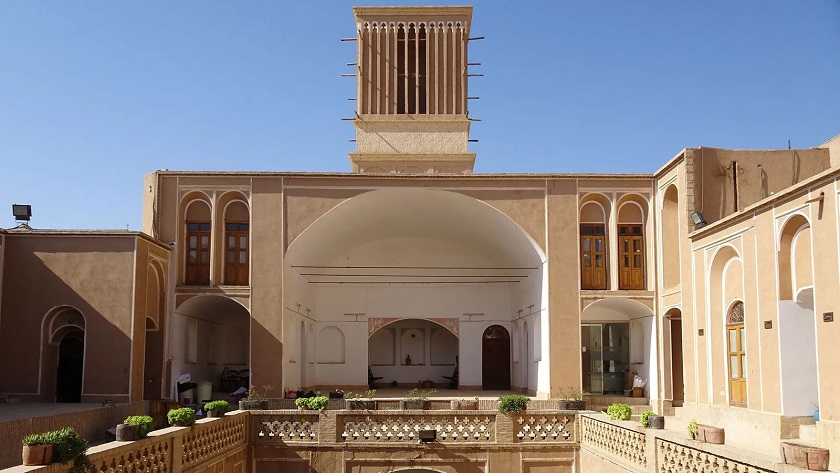 Iran is the origin of windcatchers
Iran is the origin of windcatchers
The child of inhabitants' ingenuity in dry cities of Iran was born to serve mankind sustainably and remained the Persian native structure to be praised as unique ancestral knowledge. The ancient engineers of the desert invented this avant-gardist cooling system known as 'Badgir' or windcatcher.
 Dowlat Abad Garden in Yazd hosts the tallest windcatcher in Iran
Dowlat Abad Garden in Yazd hosts the tallest windcatcher in Iran
Nowadays, windcatchers are one of the most famous and picturesque features of Persian cities. They can be found in many places in Iran, particularly in the cities close to the central deserts and all along the Persian Gulf. Yazd counts an incredible number of beautiful windcatchers, that's why it is known as "The city of Windcatchers". It's also in its Unesco-listed garden, Dowlat Abad which stands as the tallest windcatcher in the world, up to 34 meters.
Read More: Sirjan twin Iceboxes; glory of Iranian architecture
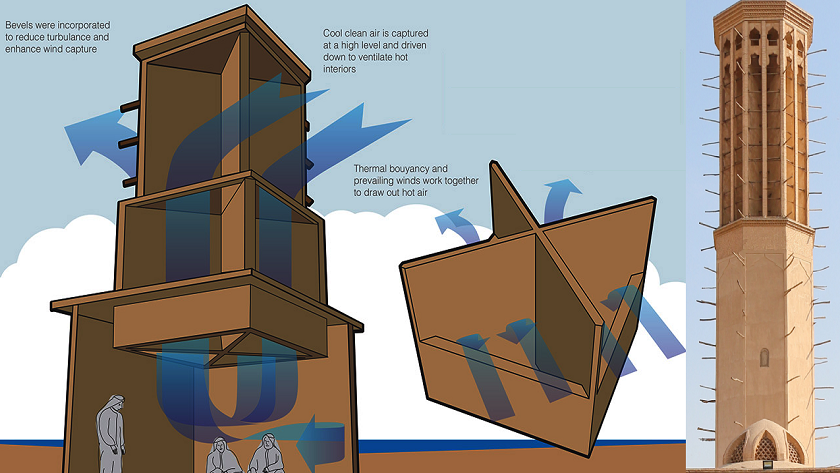 This picture shows how a windcatcher works
This picture shows how a windcatcher works
How wind catchers work
Windcatchers work in a few ways: The first and most common is to cool the inside of a building. The tower has openings that are facing the wind and trap it inside creating a nice breeze inside the building, much like the way you feel in a wind tunnel between skyscrapers. When used with the qanat, the air is pulled down, reaches the water and is drawn up the windcatcher to be dispersed in the building.
It traps the itinerant wind to bring fresh air to the living rooms of houses in dry climate regions of the Iranian plateau. This high adobe-brick tower has vents at the top up to eight and mostly chill the space cooperating with stored water built beneath it.
When there is no wind, the windcatchers are like a chimney, letting the hot air rise and escape. When the hot air can rise, flow is created and it escapes out of the chimney.
Read More: Persian Qanat; what Iran is known for
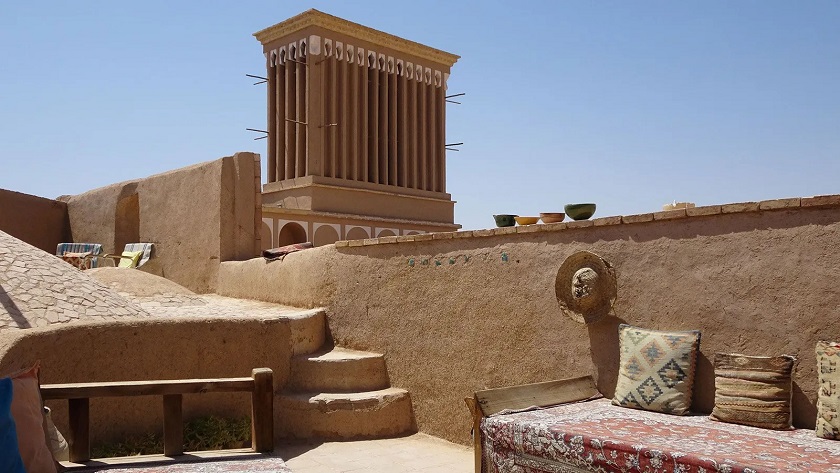 Windcatchers make a gorgeous skyline in Yazd, Iran.
Windcatchers make a gorgeous skyline in Yazd, Iran.
Architectural significance
Most of the time, a water pool was located right under the column. When the air meets the water, it creates natural evaporation, which also cools down the temperature of the room. Standing under one of these structures is impressive, as they work in any circumstances, even in the absence of a breeze. Looking up, one can see that the space inside the column is divided by ranges of bricks, which is another way to accelerate the movement of the airflow.
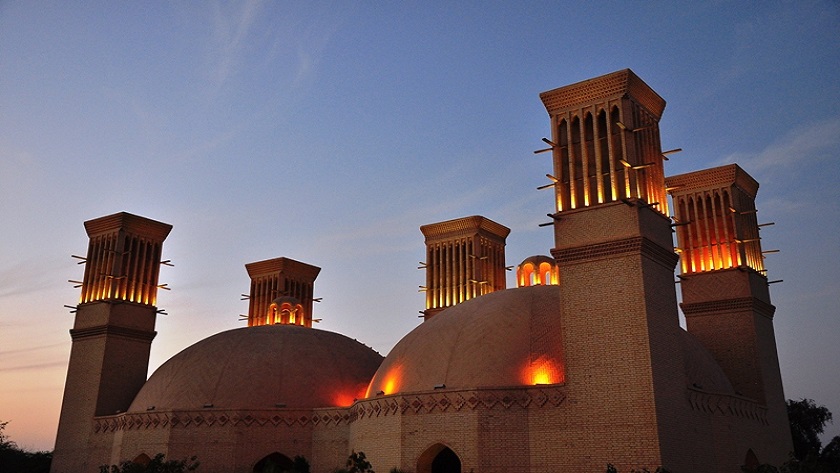 Windcatchers on a water reservoir at night
Windcatchers on a water reservoir at night
This extraordinary engineering system still inspires architects today, as it's a perfect example of a remarkable and environmentally friendly cooling system. Studies have shown that windcatchers can reduce the indoor temperature by around 10 degrees.
That's why in ancient Persia, they were always built upon water reservoir and 'Yakhchal', an ancient ice storage room, which is the forefather of our modern fridge. Windcatchers would allow people to keep freshwater, meats and sometimes food, during the hot months of summer in the absence of a fridge in the past.
 Inside of a windcatcher
Inside of a windcatcher
Various Windcatcher designs
Uni-directional
If wind tends to blow from one side only, then it will be built with one downwind opening, without openings in any other directions.
Bi-directional
These windcatchers tend to be more efficient for airflow circulation and have better performance. They serve two functions – to blow and suck air into a building.
Multi-directional
These tend to be either four, six or eight-sided windcatchers, and are bigger and taller than the two types above. The exact height and structure of each opening depend upon the specific region’s climate.
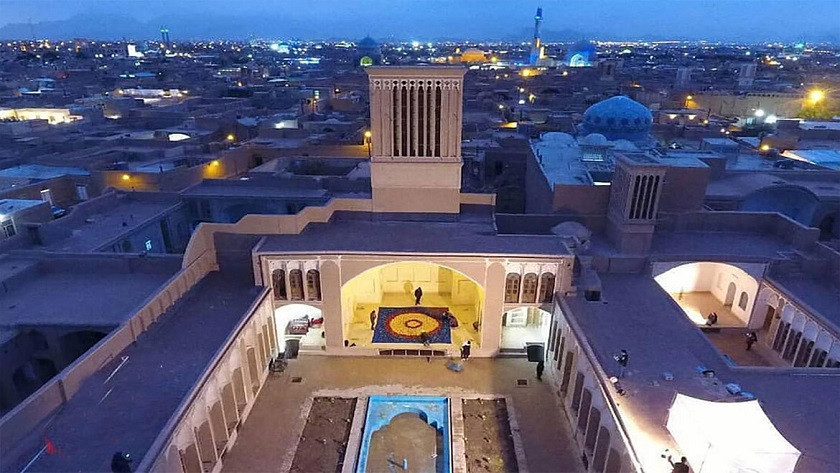 Today windcatchers in addition to their main job attract tourists too
Today windcatchers in addition to their main job attract tourists too
Windcatchers as tourist attractions
Additionally, Windcatchers have been decorated with aesthetic purposes all along with history, with carved arches, bricks, etc. The earliest reference to these incredible creative systems dates back to the 5th century as cited in 5th-Century Persian poet Nasir Khusraw. However, due to the fragility of these structures, the oldest extant example in Iran dates back to the 14th century only. As Persian architecture has largely influenced its neighboring countries, windcatchers can be found in the whole Middle East, as well as North Africa and up to India.
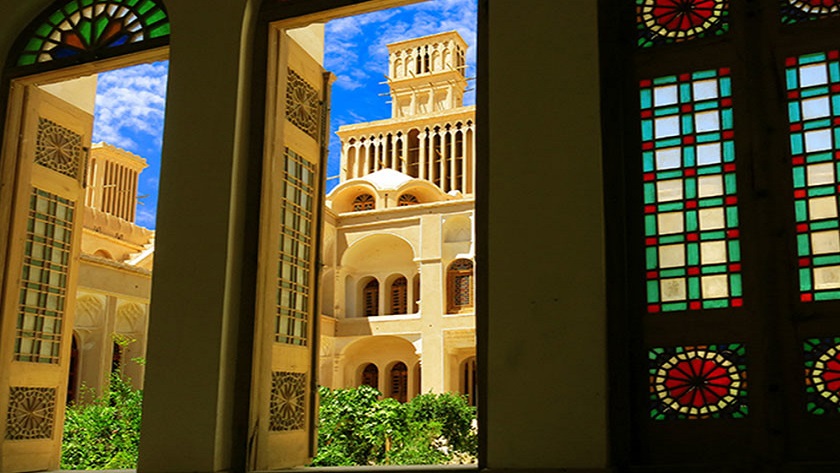 A traditional house in Yazd cooled by a windcatcher
A traditional house in Yazd cooled by a windcatcher
Along with Persian Qanat, an underground water channel listed by UNESCO as a world heritage, windcatchers (Badgirs) are a representative of the creative genius of Persia, which can still be appreciated by local populations, while constituting amazement for the visitor's eyes.
Iran’s wind catchers stand as a reminder of how ancient civilizations have adapted to the region’s harsh desert environment.
Read More:
Naqsh-e Jahan Square; What Iran is known for
Persepolis; What Iran is known for
Isfahan's Nagsh-e Jahan Square registered as a World Heritage property
Ashkan Salehian

